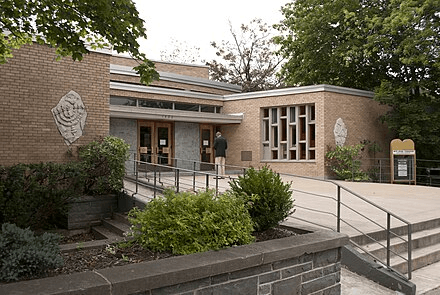It was Shabbat dinner. Bubbie was talking about the Challah, my uncle and dad were having one of their endless debates, and my mom was telling me about the nice new Jewish boy next door. All at once, it dawned on me: these people never stop talking.
While many Jews imagine that constant interruption of one another is normal and that gentile children suffer the same piercing noise level at Christmas and Easter dinners, this may not necessarily be the case. According to linguistics researchers, this unique communication style is specific to certain cultural or linguistic communities. Cooperative overlap (or collaborative overlap), as researchers have dubbed the phenomenon, creates an atmosphere where everyone can talk over each other to continue the conversation.
Many cultures consider conversational interruptions impolite. Starting to speak before another has finished violates their right to the floor. However, within cultures where cooperative overlap thrives, such as Jewish communities, this dynamic is embraced. For many Jews, this is the standard for a good kvetch—being able to squawk and gawk without pause arguably allows for a more interesting and engaging conversation.
Sarah Bunin Benor, a professor of linguistics and contemporary Jewish studies at Hebrew Union College and director of the Jewish Language Project, has extensively researched Jewish speaking patterns. In one study, she investigated how much Jews interject.
“This is not only a Jewish way of speaking, but this phenomenon is seen very much with Ashkenazi Jews,” Benor said in an interview. “[I studied] how often people were to say that their speech style is too aggressive [....] 47% of Jews said sometimes or many times, [compared to] 36% of non-Jews.”
However, conversational overlap is more than just interrupting. “You can interrupt by completely changing the topic, but if you overlap, you’re adding to the topic in the same conversation,” Benor explained. “[There] is an issue of perception. What some people perceive to be normal conversation, others can see as rude.”Conversational overlap, though sometimes misunderstood by outsiders, serves a higher purpose in maintaining the momentum and excitement of dialogue. It is not meant to silence the speaker but rather to encourage them far more than a plain “mhm.”
In the cacophony of Jewish conversation, what might seem like a chaotic clash of voices is actually a finely tuned symphony of cultural connection. Jewish communities do not simply tolerate this phenomenon; they instead cherish it as a marker of engagement and deep-rooted bonds. Benor adds that this is not the only unique way Jews talk. Jews, especially in Orthodox communities, “have different [conversational] speeds and inflections to non-Jews. The more someone stays in the community, the more they take in these traits.” This means that the more immersed someone is in the Jewish community, the more their entire speech pattern conforms to a kind of sing-songy Jewish style that you might hear when listening to the rabbi speak. As Jews become more integrated with the greater community, their speech remains distinct and potentially confounding to the unfamiliar ear.
Cooperative overlap could be dying out as it is more and more seen as a problem rather than a virtue. According to Benor, “that is more an issue of cultural changes. As groups interact more, we tend to temper [these kinds of speaking behaviours].” That is why it is so important for Jews to embrace the pattern of cooperative overlap and find a balance between overlap and listening. It’s just how we schmooze, and we shouldn’t change it.
Powered by Froala Editor






